Greek Designers: Crafting Beauty Inspired by Tradition and…
Explore these unique items by Greek…
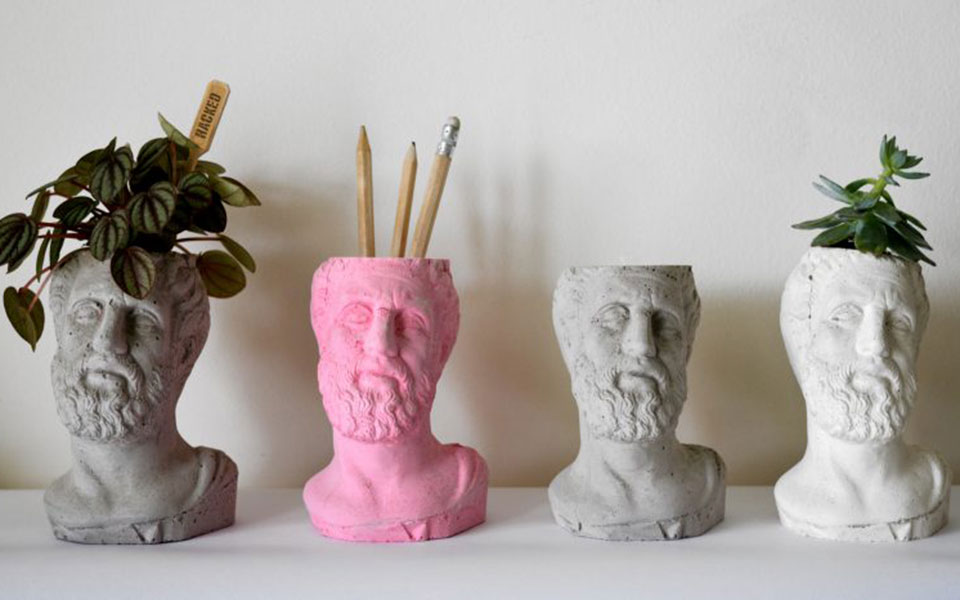
"Hacked" by A Future Perfect
Another souvenir shop, carrying the entire spectrum of tacky, recently closed on my island. It had everything from plastic key chains to ‘generic temple’ magnets, to mugs carrying the symbol of the 2004 Olympic Games. The only foreign visitors I ever took there were children and a friend involved in a “Bring home the ugliest souvenir” competition. Still, for some reason, the fact that it closed felt like a sad occasion, putting us locals in an off mood and pondering about the passing of time.
A famous quote by Milan Kundera goes: “Kitsch is the inability to admit that shit exists”. He wasn’t talking about t-shirts stamped with “I heart Greece” or about postcards with wrong captions, but he could have been.
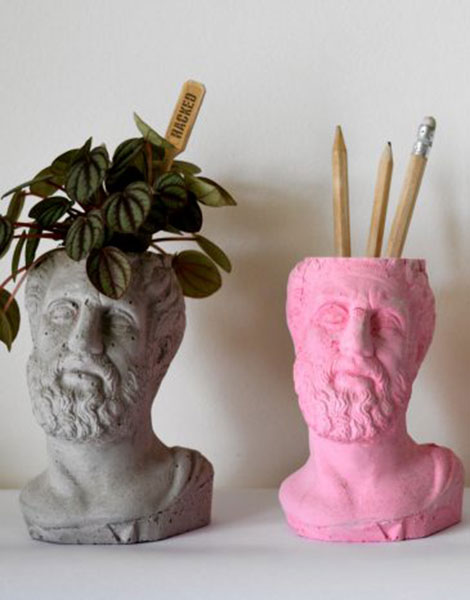
The "hacked" from design brand A Future Perfect
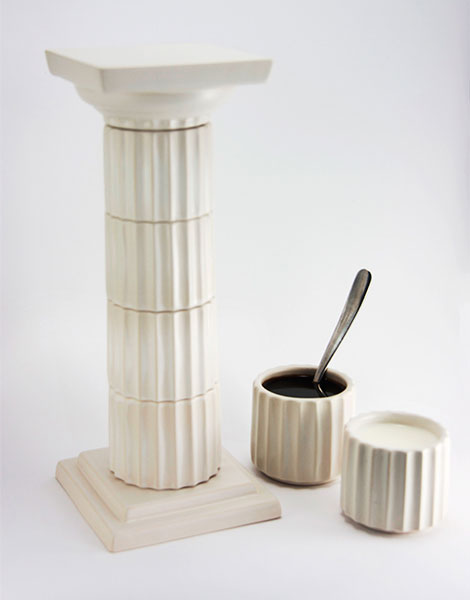
The "Kiones" from design brand Anaia
While today most of us connect the word kitsch to mass-produced items of bad taste, Kundera used it to describe the human tendency to ignore the existence of anything bad or ugly, and to focus on frivolous things. In this context, flimsy plastic figurines become somewhat interesting. Ugly souvenirs provoke a contrast of feelings. You don’t want to decorate your home with them, but they are so kitsch that you just can’t help but fall in love with them. They are useless, yet somehow we need them.
At the annual summer exhibition arranged by It’s all, oh so souvenir to me, a shop and design platform dedicated to the reinvention of the souvenir, you can sense the love that the contributing designers still have for the ugly souvenirs of late 20th century Greece. It has to do with nostalgia, and it’s not too surprising. After all, plaster replicas of ancient statues and seashell-decorated gel candles were part of these designers’ childhoods. When creating tasteful, modern items in keeping with current design trends, there is often some reference to ‘traditional’ souvenirs as we have them in our minds.
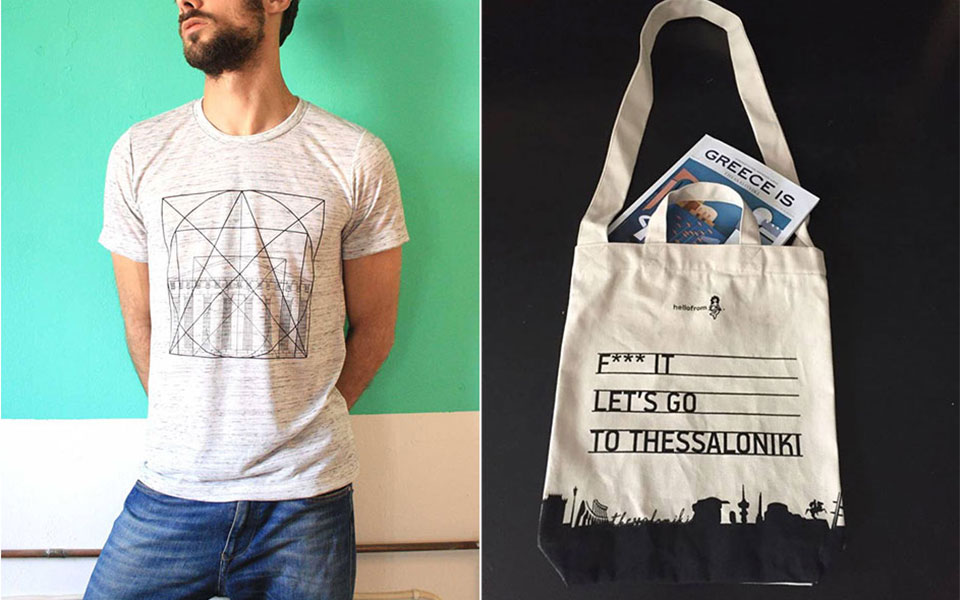
A T-shirt from the brand Zacharias and a bag from the hellofrom store in Thessaloniki.
For example “Hacked”, by Katerina Grigoropoulou and Evi Sougkar of the design brand A Future Perfect, is a concrete bust inspired by ancient Greek statues. It looks much like the plaster versions sold in every souvenir shop in the country, except it doubles as a flower pot and also comes in bright pink. In a way, they don’t shy away from kitsch as much as they intensify it to a degree where it becomes enjoyable. Placed in your contemporary home, it becomes a statement piece rather than an unfortunate choice. Similar items are made by the brand SOPHIA, which makes (pricey) replicas of ancient statues in bright colors. While by definition the point of all souvenirs is to help bring back memories of your trip, this new class of items cleverly evokes nostalgia for the souvenirs of the past.
The “Kionas” by design brand Anaia is a small column which looks just like a souvenir brought home from a trip to Crete in the 80s, but it disassembles into little cups which, when separated, look clean and minimal, as if made for serving soy sauce at a sushi dinner. You can even get a Parthenon t-shirt that’s actually cool from the brand Zacharias.
What designers and shop owners are trying to do is to redefine the word souvenir. A souvenir in 2018 should carry meaning and weight – be a piece of art or something useful. But, most importantly, it must be genuine. No one likes an Athens monument on a postcard from Santorini.
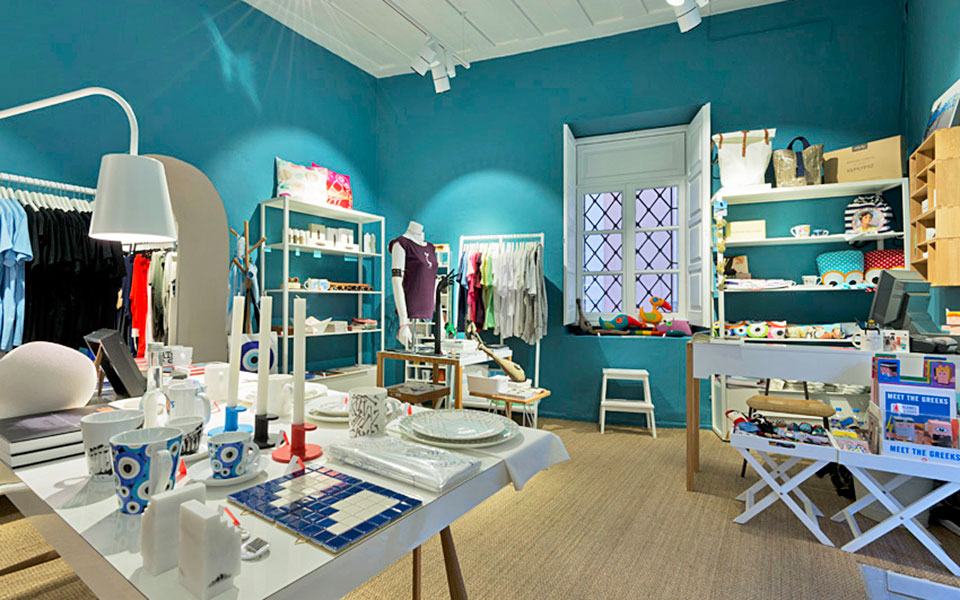
The Forget Me Not store in Athens
The shops are also changing. While many old ones are closing, a new wave of souvenir outlets like Forget Me Not in Athens and hellofrom in Thessaloniki resemble design boutiques more than the beachside tourist shops we remember from childhood vacations. Even museum gift shops, like those of the Acropolis Museum and the Benaki Museum, now carry souvenirs created in collaboration with up-and-coming designers, which are desirable not just as mementos, but as design objects in their own right.
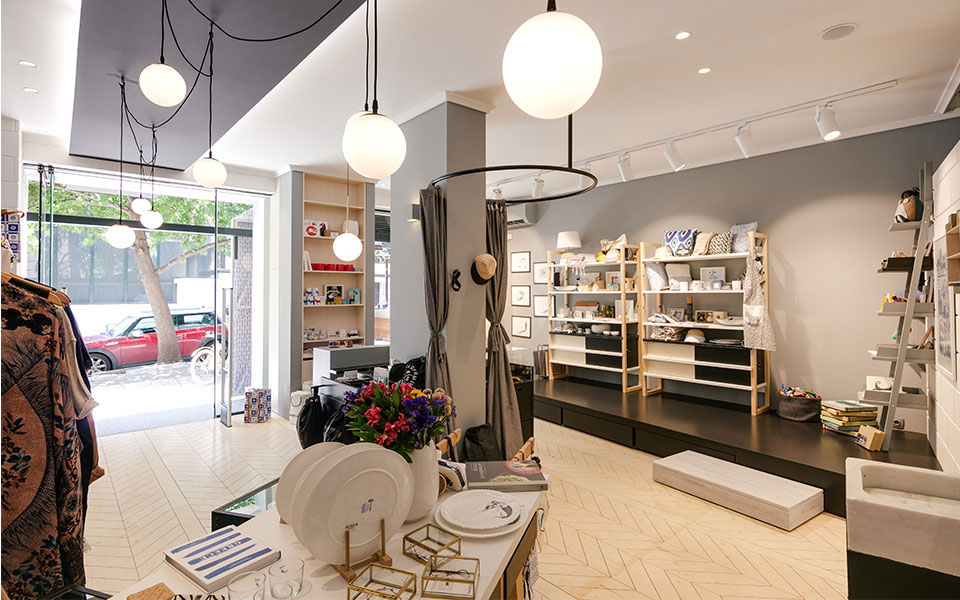
The hellofrom store in Thessaloniki
No matter how much we reinvent the concept, however, a touch of the old lives on. Even the new souvenirs often fall into the tchotchke category, and as we buy them, we know we might one day look at them and wonder why on Earth we did. Mugs sold in the souvenir shops today may have modern designs, but they’ll still end up creating a cupboard full of mismatched ceramics.
But that’s not really a bad thing. As Kundera proved in The Unbearable Lightness of Being, and as the souvenir designers of today seem to have understood: kitsch is part of life, it’s what makes it light, and it should be embraced.
Explore these unique items by Greek…
Pondering what to buy for yourself…
Don’t wait too long. One of…
If there’s one thing Greek fashion…